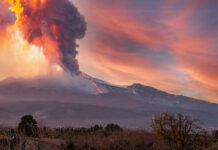
In the face of a deadly microscopic predator, only four individuals emerged victorious. Extraordinary individuals defied the odds and survived the lethal brain-eating amoeba, Naegleria fowleri.
Kali Hardig, a 22-year-old from Arkansas, and Caleb Ziegelbauer, a 14-year-old from Florida, are among the rare survivors of this fatal infection. Their stories of resilience and recovery are nothing short of miraculous, considering the amoeba claims the lives of 97% of its victims.
"Only about three people in the United States get infected each year, but these infections are usually fatal”
Out of the 157 people suffering from the same type of infection in the United States, only four have survivedhttps://t.co/axgqxXq0co
— The Epoch Times (@EpochTimes) September 18, 2023
Kali Hardig contracted the infection a decade ago when she was just 12 years old. Doctors initially diagnosed her condition as a death sentence, predicting she had only days to live. However, Kali proved them wrong.
After undergoing surgery and receiving an anti-amoeba drug from Germany, she made a remarkable recovery. Today, she leads a normal life, working as a receptionist and raising her daughter, Adalynn.
Her only lasting effect from the ordeal is occasional blurry vision in her left eye.
Caleb Ziegelbauer’s story is equally inspiring. He contracted the amoeba in July 2022 after swimming at Charlotte Beach in Florida. His symptoms rapidly escalated from a severe headache and fever to hallucinations, prompting his family to rush him to the hospital.
Doctors placed him in a coma and administered medications. Despite the grim prognosis, Caleb fought back. He emerged from the ordeal with impaired speech and mobility, but his spirit remained unbroken.
Today, he can stand, laugh, and communicate using facial expressions and even his eyebrows.
A child has died after being exposed to a rare brain-eating amoeba while playing at a splash pad.https://t.co/sfgapp005V
— KTLA (@KTLA) September 16, 2023
Both Kali and Caleb had to relearn basic skills like walking and talking, due to the damage inflicted on their brains and nervous systems by the amoeba. Their survival is attributed to early diagnosis, effective treatment, and a good dose of luck.
The Naegleria fowleri amoeba thrives in warm bodies of freshwater and enters the body through the nose. From there, it travels along the olfactory nerve to the brain, causing inflammation and destruction of brain tissue.
The infection begins with symptoms like a splitting headache, high fever, change in taste or smell, and sensitivity to light. It quickly progresses to hallucinations and seizures, often proving fatal within days.
The increasing prevalence of this disease is linked to global warming, which raises temperatures in freshwater bodies, creating ideal conditions for the amoeba. This alarming trend underscores the urgent need for increased awareness and preventive measures.













